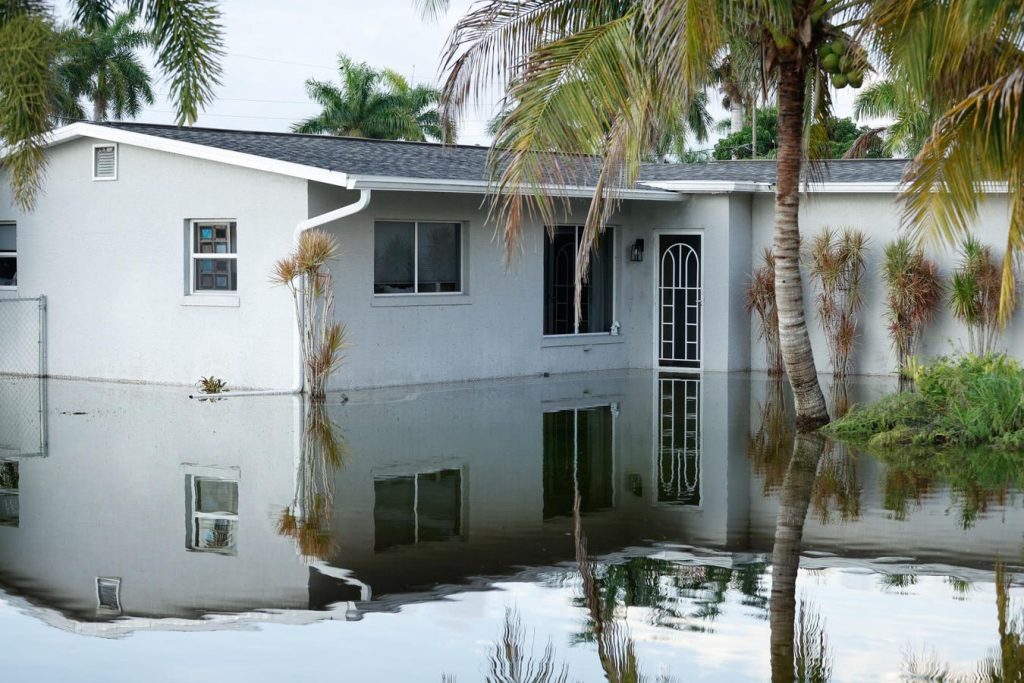In the wake of the recent South Florida floods, many face the challenge of filing a flood insurance claim. This comprehensive guide aims to simplify the process, providing clear, step-by-step instructions to help you navigate through it efficiently. Knowing what to expect can make a significant difference in the outcome of your claim.
Initial Steps
Contact Your Insurance Provider
The first crucial step in filing a flood insurance claim is contacting your provider. This should be done as soon as possible after the flood has occurred to ensure that your claim is processed promptly.
Ensure that your policy number is readily available, along with any personal identification information they might require. This initial contact will notify the insurance company of the flood event and begin the documentation process.
If your policy is through the National Flood Insurance Program (NFIP), contacting them directly will be necessary. The NFIP is a federally-backed program that offers flood insurance to property owners, renters, and businesses. They have specific procedures in place for filing claims, and their website provides a wealth of resources to guide you through the process. You can find contact details on their official website, or your insurance agent may also assist you in initiating the claim.
Report The Flood Damage
It is crucial to report the extent of the flood damage comprehensively. This initial report will trigger the formal claims process and ensure your insurer knows the situation.
In the immediate aftermath of the flood, take steps to mitigate further damage to your property. This can include shutting off electricity to prevent electrical fires, moving undamaged items to higher ground or safer locations, and using tarps or boards to cover any openings in the structure that could lead to further water intrusion.
Document these actions meticulously as they demonstrate your proactive efforts to minimize damage, which can be vital to your claim.
Documentation And Evidence
Use Photo And Video
Begin documenting the damage as soon as it is safe to do so. This documentation should be thorough and systematic. The more detailed your documentation, the stronger your claim will be.
Use a high-resolution camera to capture clear images and videos. Start with wide-angle shots of each affected area to provide a comprehensive overview. This should include entire rooms, focusing on walls, floors, and ceilings.
Next, take close-up shots of specific items and areas that have sustained damage. This includes furniture, electronics, appliances, personal belongings, and structural components such as walls, floors, and foundations.
When photographing damage, ensure you capture multiple angles. This helps provide a complete view of the extent of the damage. For example, take photos of water lines on walls to show the height reached by the floodwaters. Document any signs of mold or mildew, which can develop quickly after a flood. If possible, date-stamp your photos to provide a timeline of the damage. This can be crucial if there are delays in processing your claim.
Videos can be particularly effective for capturing the extent of damage. Walk through your property with a video camera, narrating the damage as you go. Point out specific areas of concern, such as waterlogged furniture, damaged electrical systems, and compromised structural elements. Narration can provide additional context that photos alone might not convey. This comprehensive visual record will be invaluable when your insurance adjuster assesses the damage.
Itemize Damages
In addition to visual evidence, create a detailed and exhaustive inventory of all damaged property. List each item, providing a description, the brand, model, and serial number if applicable.
Note the item’s condition before the flood and estimate the cost of repair or replacement. Include the purchase date and original value of each item. Providing receipts or proof of purchase strengthens your claim, offering concrete evidence of the item’s value. For high-value items, such as electronics, jewelry, or artwork, include any available appraisals or insurance valuations.
Beyond personal property, document structural damage to your home. This includes damage to the foundation, walls, floors, roof, windows, and doors. Take photos and videos of cracks, warping, and other signs of structural compromise. If you need to make temporary repairs to prevent further damage, document these repairs. Keep receipts for any materials or labor costs associated with these repairs, as they may be reimbursable under your policy.
It is also important to document any additional living expenses (ALE) you incur if your home is uninhabitable. Keep receipts for hotel stays, meals, transportation, and other costs related to temporary relocation. Your policy may cover these expenses, but thorough documentation is required to substantiate your claim.
As you gather documentation, log all communications with your insurance provider and adjuster. Note the date, time, and content of each conversation. Keep copies of all correspondence, including emails and letters. This log can help you track the progress of your claim and provide a record in case of disputes.
Filing The Claim
Review Your Policy
Familiarize yourself with the specific terms of your policy to understand what is covered and what might be excluded. This knowledge will help you file an accurate claim and set realistic expectations for your compensation.
Pay attention to exclusions, such as damage caused by mold or long-term neglect, to avoid surprises. If there are ambiguities in your policy, seek clarification from your insurance agent. For complex disputes, consider consulting an attorney specializing in insurance claims.
Complete And Submit Claim Forms
You can access the necessary claim forms through your insurance company’s website or by contacting your agent. When filling out the forms, be meticulous and provide all requested information. This typically includes your policy number, contact information, a detailed description of the damage, and an estimate of the repair or replacement costs.
Double-check all entries for completeness and correctness. Ensure that all sections of the form are filled out and that you have included all required documents. Missing signatures or incomplete information are common mistakes that can be easily avoided with careful attention.
Attach all supporting documentation to your claim forms. This includes the photographs, videos, and inventory list you prepared earlier. Ensure that these documents are clearly labeled and organized.
For example, group photos and videos by room or type of damage to make it easier for the adjuster to review. If you have proof of purchase or receipts for high-value items, include these as well to substantiate their value.
Once your claim forms and supporting documents are complete, submit them to your insurance company. Most insurers offer multiple submission methods, including online portals, email, mail, or fax. Choose the most convenient method for you, but ensure that you retain copies of everything you submit for your records.
Expect The Adjuster To Visit
The adjuster’s role is to inspect the damage, review your documentation, and determine the extent of the loss. It is essential to be cooperative and communicative during this stage. When the adjuster contacts you to schedule an appointment, be flexible and accommodating. Prepare for their visit by organizing your documentation and making the damaged areas accessible.
During the adjuster’s visit, provide all relevant information and answer any questions. Share your photographs, videos, and inventory list, and walk them through the damaged areas. Be honest and detailed in your descriptions, and point out any areas of particular concern. The more information you provide, the more accurately the adjuster can assess the damage.
If the adjuster requests additional documentation or information, provide it promptly. Timely responses help keep the claims process moving forward. Remember to keep a log of all interactions with the adjuster, including dates, times, and the nature of the communication. This record can be useful if there are any disputes or delays.
Claim Processing And Follow-Up
The timeline for processing claims can vary widely, typically from several weeks to a few months, depending on the severity of the disaster and the volume of claims being handled. Major disasters often lead to an influx of claims, slowing down processing times.
Once the adjuster has completed their assessment, they will compile a report that will be sent to your insurance company for review. This report and the documentation you provided form the basis of your claim.
The insurance company will then analyze this information to determine the claim’s validity and calculate the settlement amount. During this phase, maintaining regular communication with your insurance company is vital. Periodically check the status of your claim to stay informed about any additional information or documentation that may be required. Promptly responding to such requests can prevent unnecessary delays.
If your claim is approved, you will receive a settlement offer outlining the amount your insurance company is willing to pay. Review this offer carefully to ensure it covers all the documented damages. You have the right to negotiate if you believe the offer is insufficient.
Appeals And Disputes
Review And Reassert Your Claim
If your claim is denied, it is essential to understand the specific reasons for the denial. The insurance company will provide a denial letter outlining why the claim was not accepted. Carefully review this document to identify any potential errors or misunderstandings that might have led to the denial. Sometimes, claims are denied due to simple clerical mistakes, missing information, or misinterpretations of the policy coverage.
Once you understand the reasons for the denial, gather all the necessary documentation to support your appeal. This includes your original claim submission and any correspondence you had with the insurance company or adjuster. You may also provide additional evidence that can strengthen your case.
For instance, you might need to include contractor estimates for repairs, additional photographs, or expert assessments. Obtaining professional appraisals can be particularly useful if there are specific points of contention, such as the valuation of certain items.
Write a comprehensive appeal letter stating why you believe the denial was incorrect. Refer to the specific clauses in your insurance policy that support your claim, and present your additional evidence in a logical and organized manner. The goal is to demonstrate unequivocally that your claim is valid and that the initial denial was based on incomplete or incorrect information.
Additional Strategies
You may need to escalate the matter if your appeal is not progressing as expected or the insurance company maintains its denial. Contacting a public adjuster can be beneficial. Public adjusters are independent professionals who advocate on behalf of policyholders. They can thoroughly review your claim, identify any additional documentation that may be needed, and negotiate directly with the insurance company on your behalf. Their expertise can be particularly valuable in complex cases or when dealing with significant damage.
In some instances, it may be necessary to seek legal advice. Consulting with an attorney specializing in insurance claims can provide you with a better understanding of your legal rights and options. An attorney can help you navigate the appeals process, represent you in negotiations, and, if necessary, take legal action against the insurance company. While this step can be more time-consuming and costly, it may be necessary if the dispute cannot be resolved through other means.
Another potential avenue for resolving disputes is mediation or arbitration. Many insurance policies include clauses that require disputes to be settled through these alternative dispute resolution methods. Mediation involves a neutral third party who helps facilitate a discussion between you and the insurance company to reach a mutually acceptable resolution. Arbitration, on the other hand, involves a neutral arbitrator who listens to both sides and makes a binding decision. Both methods can be less adversarial and more cost-effective than going to court.
Final Thoughts
To maximize your chances of a successful claim, stay organized, document everything thoroughly, and maintain open communication with your insurance provider. Understanding your policy, preparing for the adjuster’s visit, and knowing how to follow up and appeal if necessary are crucial steps in navigating the flood insurance claims process effectively.
Following this comprehensive guide, you can confidently navigate the complexities of filing your insurance claim and secure the compensation needed to recover and rebuild after a flood.
Read the full article here










